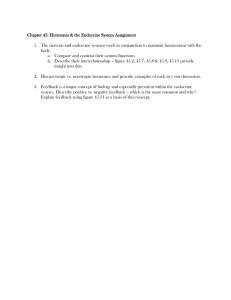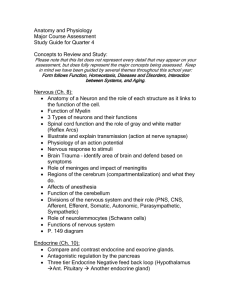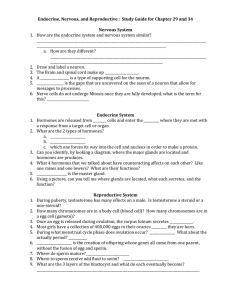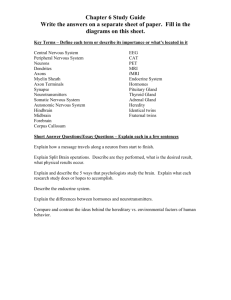Anatomy and Physiology Honors
advertisement
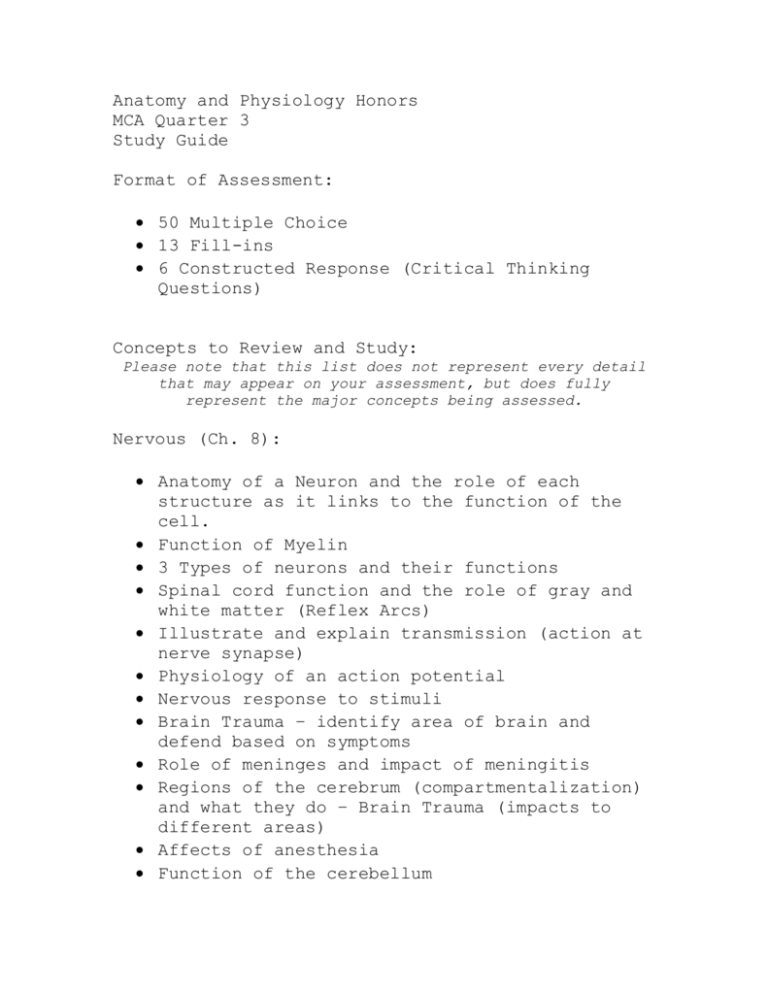
Anatomy and Physiology Honors MCA Quarter 3 Study Guide Format of Assessment: 50 Multiple Choice 13 Fill-ins 6 Constructed Response (Critical Thinking Questions) Concepts to Review and Study: Please note that this list does not represent every detail that may appear on your assessment, but does fully represent the major concepts being assessed. Nervous (Ch. 8): Anatomy of a Neuron and the role of each structure as it links to the function of the cell. Function of Myelin 3 Types of neurons and their functions Spinal cord function and the role of gray and white matter (Reflex Arcs) Illustrate and explain transmission (action at nerve synapse) Physiology of an action potential Nervous response to stimuli Brain Trauma – identify area of brain and defend based on symptoms Role of meninges and impact of meningitis Regions of the cerebrum (compartmentalization) and what they do – Brain Trauma (impacts to different areas) Affects of anesthesia Function of the cerebellum Divisions of the nervous system and their role (PNS, CNS, Afferent, Efferent, Somatic, Autonomic, Parasympathetic, Sympathetic) Role of neurolemmocytes (Schwann cells) Functions of nervous system Endocrine (Ch. 9): Compare and contrast endocrine and exocrine glands. Antagonistic regulation by the pancreas Three tier Endocrine Negative feed back loop (Hypothalamus Ant. Pituitary Another endocrine gland) Dual role of the Thymus gland Compare and contrast steroid and peptide hormones Growth hormone and impacts of hyper or hypo secretion of GH. Diseases and Disorders of Endocrine (e.g. Addison’s, Cushing’s, Dwarfism, SAD, Diabetes incipitus, Diabetes Mellitus, etc.) Regulation of calcium in the blood Specific role of hormones (e.g. oxytocin, calcitonin, insulin, TSH, ACTH, etc.) Compare and contrast hypothalamic control of anterior or posterior pituitary. Steroid vs. peptide hormones Functions of endocrine system Blood (Chapter 11) Functions of Blood Anatomy of components of blood Blood typing – who can donate to who Hemopoesis (all kinds – especially erythropoesis) Hemostasis: define and explain steps Location of hemopoesis Significance of Rh and HDN Link Blood to other systems in terms of interdependence Agranulocytes vs. Granulocytes (# and types) Role of hemoglobin and significance of iron Anemia Form Follows Function of Erythrocytes and Leukocytes Functions of plasma proteins EPO Hormone Fetal oxygen affinity – link to hemoglobin Reticulocyte # before and after donating blood 3 stages of hemostasis
